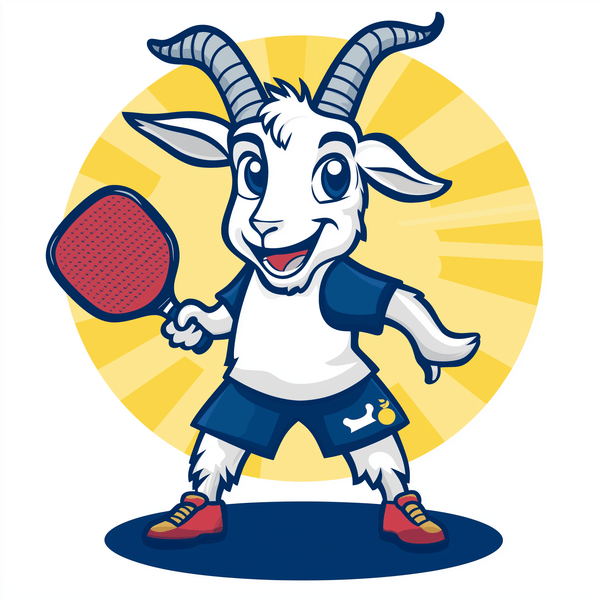
Double Bounce vs Two-Bounce Rules Explained
Share
You’re new to pickleball and keep hearing about something called the “double bounce rule.” Sure, it’s not like you’ve never seen balls bounce twice in tennis or ping pong, so what’s the big deal here? Well, here’s the catch: Pickleball’s double bounce rule doesn’t quite mean what you might think. In fact, it was officially renamed to the “two-bounce rule” to avoid this very confusion, but many players still use the old name, and that’s where it gets tricky.
So what does the rule actually say? How is it different from what you know in other paddle or racket sports? Let’s clear that up once and for all.
So, what’s the actual double bounce in pickleball?
According to the USA Pickleball Rulebook, a double bounce happens when the ball bounces twice on the same side before being returned. When that happens, the rally ends—it’s a dead ball, and it’s considered a fault.
Huh, sounds familiar, doesn’t it? So why do your pickleball friends keep talking about the “double bounce rule” like it’s something special?
Well, plot twist: what they actually mean is the Two-Bounce Rule, which used to be called the double bounce rule before the name got changed in 2018.
What is the two-bounce rule?

The two-bounce rule applies to the first three shots; the ball must bounce once on the receiver’s side, and then once on the server’s side—that’s two sides, two bounces! After that? It’s game on! You’re free to volley all you want. To put it simply:
- Served – 1st bounce on the receiver side
- Serve Return – 2nd bounce on the server side
- 3rd shot – The team that serves returns the ball to the receiving team, allowing both teams to volley or strike groundstrokes for the remainder of the rally.
Why the two-bounce rule matters
To keep the fun of playing pickleball alive, this rule is quite important. And why is that? Here’s the reason why it matters:
- Keep things fair – Without this rule, the receivers could easily take advantage of how far back the servers are. They could smash the ball back or gently dink over the net, and the servers will have to run for their life just to return the shot. That doesn’t sound fair, does it?
- Encourages smart play – Whether you’re a casual player or a pro, sheer power alone won’t always cut it. Sometimes, strategy is the real game-changer.
- Help the rallies last longer – Serve. Smash. Rally end. Serve. Dink. Rally end. Come on, where’s the fun? Because players start from farther back on the field, the rallies become longer and more exciting to watch.
How to use the two-bounce rule to your advantage
Even though the rule was set to make the game more balanced, it can be used to your advantage. Here are some strategies to use to outsmart your opponents:
- Aim a deep returns – Push your opponents’ position backward and open the opportunity for your team to dink while your opponents are still far back.
- Anticipate the ball's direction – Knowing where it will go helps you react more quickly.
- Get ready for powerful volleys – After the initial two bounces, position yourself to advance and take charge with quick shots.
Common Mistakes
Even seasoned players can occasionally trip up on the Two-Bounce Rule. Here are a few common missteps to watch out for:
- Returning the serve too early – Make sure to let the ball bounce once before hitting your return, or it’s an automatic fault.
- Charging the net prematurely – Don’t rush it! Moving forward before the second bounce can leave you out of position and vulnerable.
- Misreading the bounce – Poor anticipation of the ball’s trajectory can lead to weak shots or missed opportunities.
Grab your gear and gift at PickleballGoats.com
Now that you’ve got the Two-Bounce Rule down, you’re ready to step onto the court with confidence—and maybe even correct your doubles partner. But why stop there?
Show off your newfound knowledge and your personality with one of our hilarious pickleball tees from PickleballGoats.com! Whether you're buying for yourself or looking for the perfect gift for that pickleball-obsessed friend, we've got something that'll make them laugh and play better.
References
Paddletek Pickleball. (2023). Is the Two-Bounce Rule the Same as the Double Bounce Rule?. https://www.paddletek.com/blogs/news/two-bounce-rule?srsltid=AfmBOornm5-vLMkL00-voIrQ9PEfEuZq8urKXKM_cyH6OcW201Xy7fKS
USA Pickleball. (2025). Official Pickleball Rulebook - 2025 Edition. https://usapickleball.org/what-is-pickleball/official-rules/
Pickleball Equipment & Gear Thailand. (2024). กฎ Two-Bounce Rule กับ Double Bounce เหมือนกันหรือไม่?. https://pickleballth.com/blogs/pickleball/two-bounce-and-double-bounce-rules?srsltid=AfmBOopTV1ciKaq--mpoBC6lVrXZiqRFd3zGbWICgU576hCVRRMThDOr
Pickleland. (2024). Understanding The 2nd Bounce Rule In Pickleball. https://pickleland.com/2nd-bounce-rule-in-pickleball/?srsltid=AfmBOopGX61hKHe94hquJlDv-ztN-QYZriEhMXObGHLko4c-FEXh13w9
DUPR. (2025). What Is the Double Bounce Rule in Pickleball?. https://www.dupr.com/post/what-is-the-double-bounce-rule-in-pickleball
